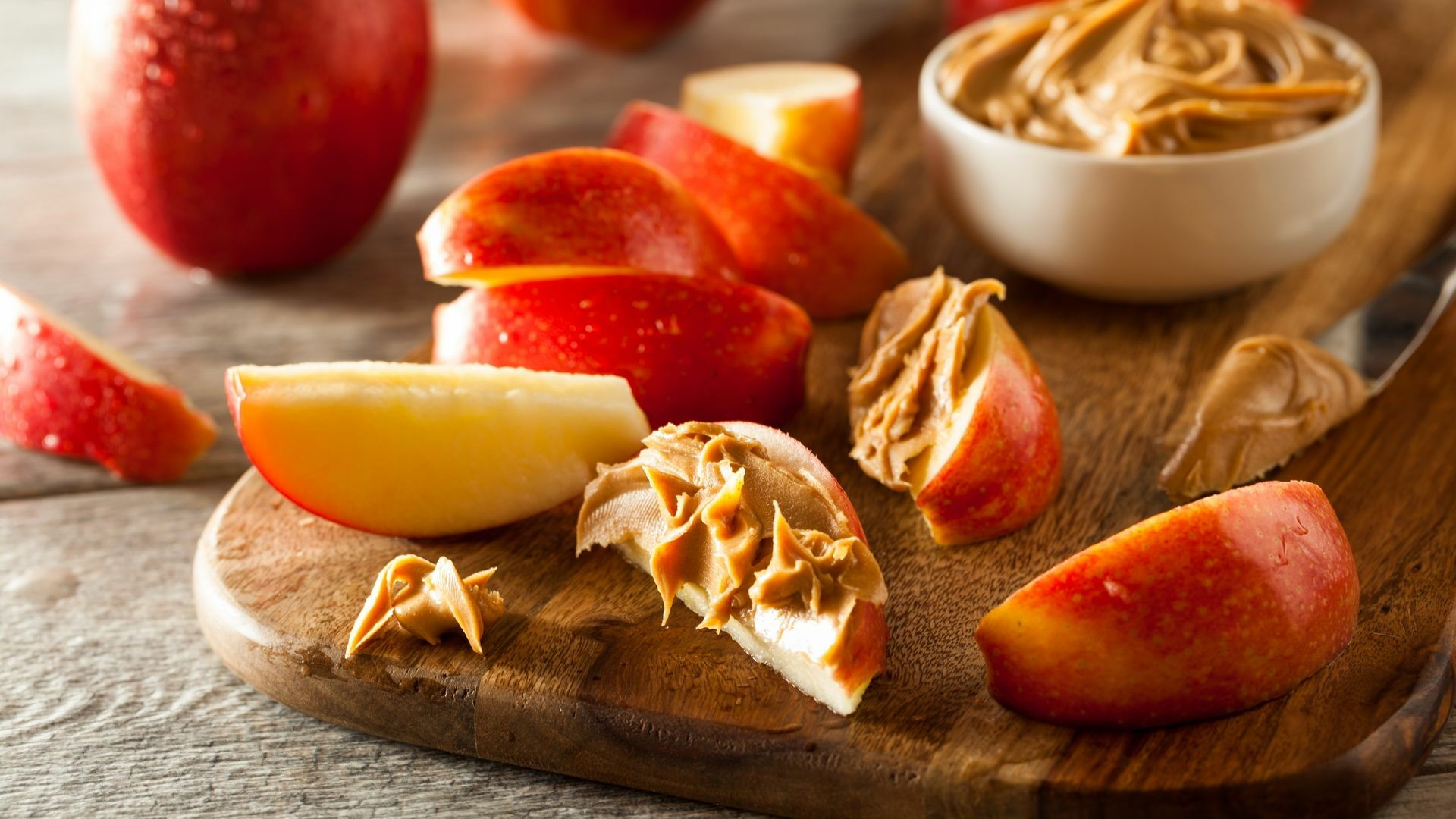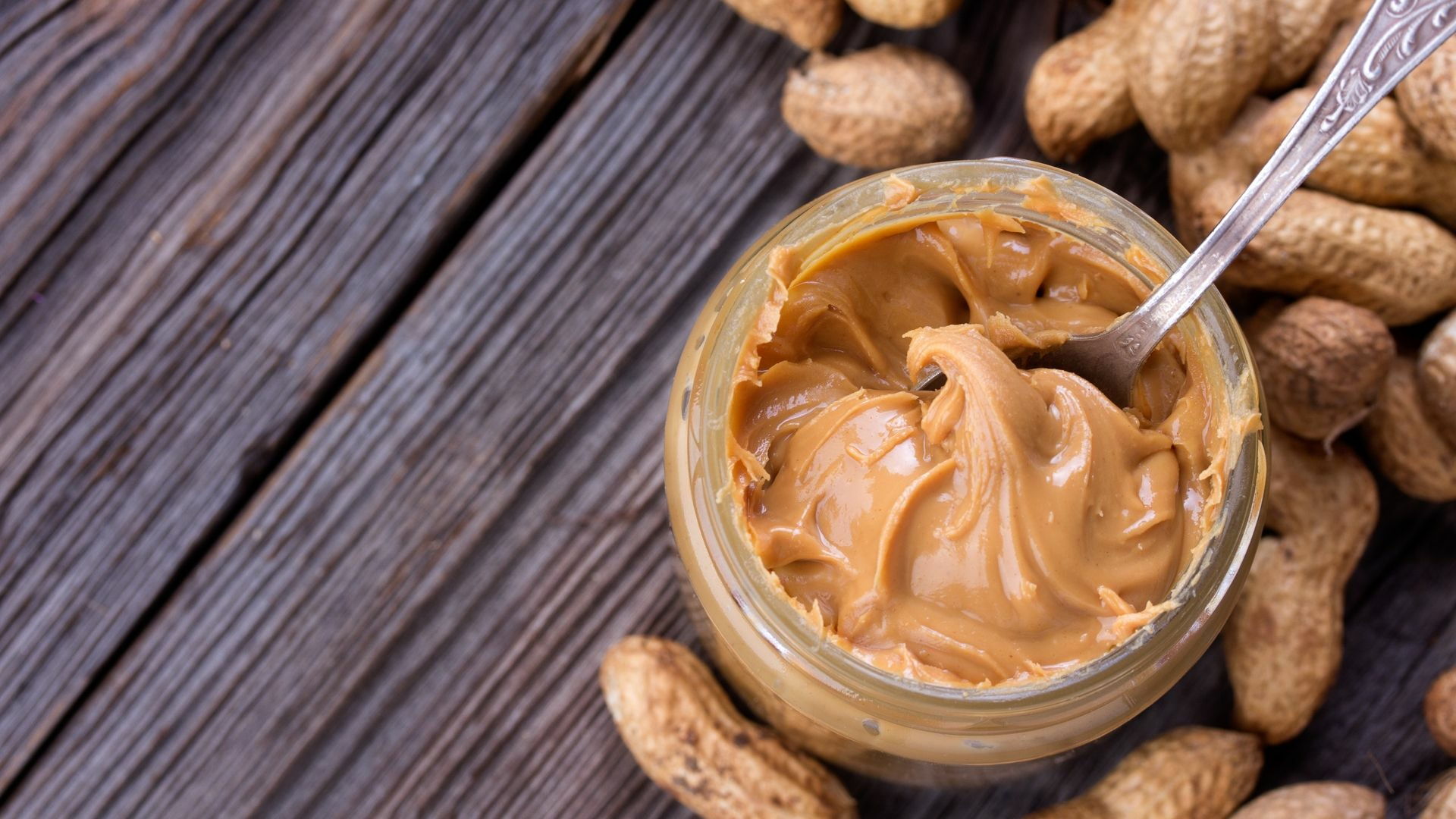Even if in Italy there are still "cultural difficulties" and it is considered a controversial nutritional element by some European nutritionists (in particular Italians), peanut butter remains one of the most popular products in the entire American continent, as well as in Asia and many European countries.
It seems that this peanut-based delicacy first saw the light at the end of the 1800s in Saint Louis, Missouri, thanks to the pharmacist George A. Bayle Jr. Since then, the world of snacks has not been the same, and peanut butter has become a must on American tables.
Peanut butter VS peanut cream: the differences

Who can resist a snack of peanut cream and apples?
Created as a meat substitute because of its high protein content (25 g per 100 g of product), peanut butter also has a significant amount of fat (about 50 g per 100 g of product).
But peanut butter and peanut cream are NOT the same things. Although the food industry tends to play down their differences and sometimes equates the two products in nutritional terms, two very different foods are derived from the grinding of peanuts, with very different organoleptic characteristics and health effects. So let's see how and why it is important to distinguish peanut butter from peanut cream.
Peanut butter
Far more widespread and industrialized, peanut butter does not exactly have ideal nutritional characteristics:
- It has a high saturated fat content, due to the added hydrogenated vegetable oils (often palm oil) and the way the seeds are processed.
- It is rich in salt, in quantities even higher than 0.8 g per 100 g of product.
- Often refined sugars are also added, which cost much less than the peanuts themselves and enhance the flavour.
These elements are added to peanuts so that the product assumes its characteristic consistency, dense, full-bodied, delicious, and ideal for spreading on a slice of bread. When mixing the product, the oil naturally tends to separate from the butter and rise to the top of the jar. To prevent this separation, additional additives are put in that foster the stabilization of the emulsion, making it even denser, compact and appetizing. All these extra ingredients greatly improve the consistency of the product, but they are also harmful to the health of peanut butter lovers.
Peanut cream

Emulsifying the peanut cream, which is naturally oilier than butter, is simple: just mix it really well!
Peanut cream is an excellent substitute for peanut butter because it is obtained by using only 100% peanuts, without adding either hydrogenated oils, refined sugars, or salt. Of course, the cream is much less dense, almost a liquid, but it is also much healthier and more nutritious.
It is made exclusively by grinding toasted peanut seeds and, if it is organic peanut cream organic peanuts are used without the addition of dyes, preservatives or chemical additives. In fact, organic farming complies with strict environmental impact standards and is subject to regular checks by certification bodies and the appropriate inspectorate.
For those of us who are addicted to this product, all this translates into a guarantee of consuming a high-quality organic peanut cream!
Properties of organic peanut cream
Organic peanut cream is in itself a healthy food and, potentially, a valid diet ally because:
- It is rich in vegetable proteins and is also excellent for those who follow a vegetarian and vegan diet.
- It provides unsaturated fats such as omega 3 and 6, which are useful to prevent cardiovascular diseases.
- It contains useful micro-elements such as vitamins E and B and mineral salts such as iron, potassium, phosphorus, magnesium, zinc and copper.
A word of caution, however! Check the labels well, there must be no other additives in the peanut cream because otherwise it literally becomes another type of food.
Organic peanut cream is also perfect for those suffering from celiac disease because it does not contain gluten.
We recommend it
- As a snack anytime and before sports activities (combined with fruit, vegetables, and rice wafers).
- For breakfast, spreading it on rusks or bread (preferably wholemeal).
- As a sweet-savory ingredient for making fabulous desserts and biscuits (like the famous "peanut cookies"), or to flavour some dishes like those used widely lately in Thailand or in certain areas of South-East Asia.
